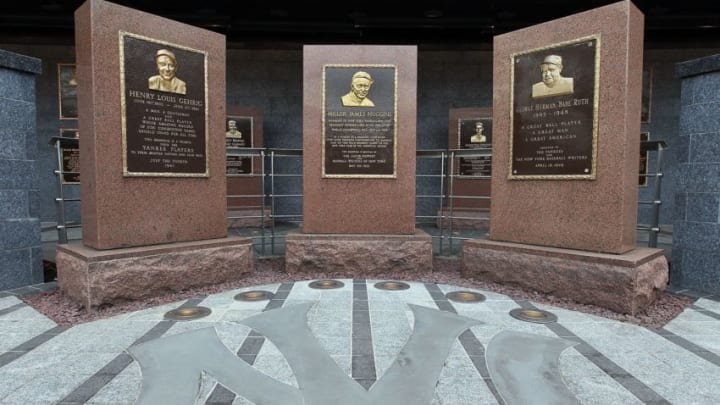Roger Maris was another in a long line of left-handed sluggers who came to the Yankees and found that the friendly short porch in right field was tailor-made for their swing.
Maris showed some power potential as a young player with the Cleveland Indians and Kansas City Athletics, but nothing he had done in three previous big league seasons could have prepared the American League for what was going to be unleashed when Maris was acquired by the Yankees from the Athletics in a seven-player trade in December 1959.
Maris had been an All-Star for the Athletics in 1959, more because someone had to be than because of star-caliber play.
But in 1960, Maris burst on to the scene in New York, leading the AL with a .581 slugging percentage and 112 RBI while belting 39 home runs.
That was just the warm-up act. In the 1961 expansion season, Maris clubbed a then-record 61 home runs and led the league with 132 runs scored, 141 RBI and 366 total bases en route to his second straight MVP award.
Maris would never again approach those levels, but he was solid for most of his remaining five seasons in the Bronx.
Injuries limited Maris to 90 games in 1963 and a misdiagnosed broken hand, per the Society for American Baseball Research, cost him all but 46 games in 1965. Another injury-plagued season in 1966 in which Maris hit just .233/.307/.689 was his final season in New York.
In December 1966, the Yankees traded Maris to the St. Louis Cardinals for infielder Charley Smith.
In seven seasons in New York, Maris hit .265/.356/.872 with an OPS+ of 139 to go with 203 home runs, 547 RBI and 520 runs scored.
Maris helped the Cardinals to a World Series title in 1967 and retired after another injury-filled season in 1968 at just 33 years old.
In retirement, Maris ran a beer distributorship in Florida with the help of Cardinals owner Gussie Busch, who set up Roger and brother Rudy Maris up with the business.
Diagnosed with lymphoma in 1984, Maris’ No. 9 was retired by the Yankees that summer at Old Timers’ Day. He died Dec. 14, 1985, in Houston at the age of 51 and to date, has not been inducted into the Hall of Fame.
